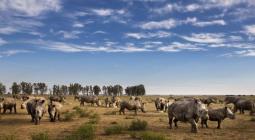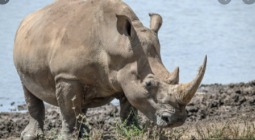AFRICA: white rhino population is increasing, but the subspecies remains threatened

Researchers from the International Union for Conservation of Nature (IUCN) have combined rhino estimates from various African countries for the year 2022. The continental assessment obtained from this work was published on 21 September 2023, on the eve of World Rhino Day. Among other findings, it shows that the white rhino population has increased in Africa for the first time since 2012. However, the threat of extinction continues to hang over these emblematic mammals of the savannah.
This is the first increase in the number of white rhinos in Africa since 2012. According to the results of a census of rhinos in various countries on the continent by researchers from the International Union for Conservation (IUCN), there are now around 16,803 white rhinos, an increase of 5.6%.
“With this good news, we can breathe a sigh of relief for the first time in a decade. However, it is imperative that we further consolidate and build on this positive development and not let our guard down,” said Dr Michael Knight, Chair of the IUCN African Rhino Specialist Group (AfRSG), which initiated the study.
Black rhinos not left behind
The count carried out in various African countries by the AfRSG has resulted in a global population of 6,487 black rhinos in Africa in 2022, an increase of 4.2% compared to 2021.
South Africa remains the continent’s leading country in terms of rhino numbers, but continues to suffer high losses due to poaching, which at the same time is driving up the cost of securing reserves. Nearly 448 rhinos were killed for their horns in 2022, compared with 451 in 2021. Neighbouring Namibia recorded 93 rhinos poached in 2022, compared with 47 the previous year. In East Africa, Kenya shows the best progress, with just one rhino poached in 2022, compared with six the previous year. To mark World Rhino Day on 22 September 2023, the AfRSG and IUCN have called for increased protection for this large land mammal. Rhinos, like Africa’s other large animals, are important drivers of biodiversity and ecology. They create habitats for other species, offering opportunities for future ecosystem restoration options on a global scale. The prosperity of Africa’s wild rhinos can also contribute to the livelihoods and well-being of local people, attracting tourists from around the world, creating employment opportunities and contributing to economic development.






